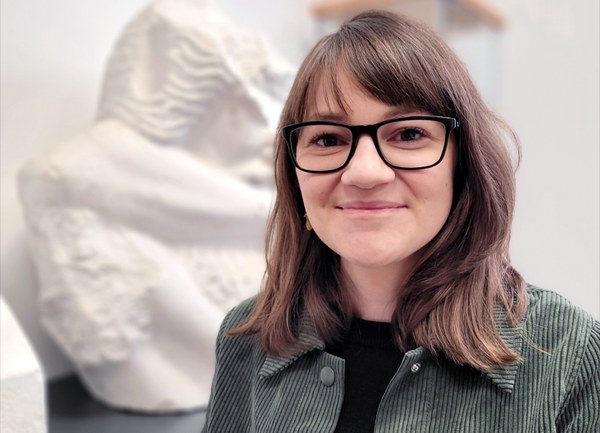Langer, Solvejg
Solvejg-Marie.Langer@archaeologie.uni-giessen.de | Lecturer
 |
Solvejg Langer, M.A.Otto-Behaghel-Str. 10, D-35394 Giessen, Building D Room 5
Consulting hours: by appointment
Phone: 0049-641-99-28053
|
Research Interests
- Archaeological and art-historical analysis of literary transmitted inscriptions and artefacts; with special focus on the Palatine Anthology
- Digital Humanities & digital editions; and their interdisciplinary use
- Spaces of cult in greek and roman theatre buildings
- Constantinople in late antique and byzantine period
- (In)script(ions) in sacral space
- History of collections and forgeries
Projects
- (In-)Schriftlichkeit in Konstantinopel. Die Stadt im Spiegel der Anthologia Palatina
The project is dedicated to the archaeological and art-historical analysis of the inscriptional and literary epigrams collected in the Palatine Anthology (AP). The important Byzantine manuscript, which was probably compiled in Constantinople in the 10th century AD, contains around 4,136 poems and epigrams, making it the most extensive collection of Greek epigrams still extant today. With its rich material, it covers a period of about 1,700 years, with the oldest pieces, including works by Archilochos and Sappho, dating from the 7th/6th century BC, while the most recent date to the 10th century AD.
The examination of the epigram corpus from an archaeological and art-historical perspective, which was pushed forward in the context of the research project, now not only opens new perspectives on the content of the manuscript and the processes behind its collocation, but also shows the potentials of the interdisciplinary analysis of such epigrammatic compilations.
While the first phase of the research, which was carried out in the context of the DFG-funded CRC 933 "Material Text Cultures", was dedicated to epigrams on churches within the AP, with the so-called Constantinople epigrams a new and broader focus is chosen for the second phase of the project. In addition, the interdisciplinary digitalisation project on the Codex Palatinus graecus 23, the first part of the Palatine Anthology, which was launched in the recent years in collaboration with colleagues at Heidelberg University Library and the University of Montreal, will be continued and further expanded.
-
Religious structures in Greek and Roman amphitheatres
Lectures
Current Lectures
